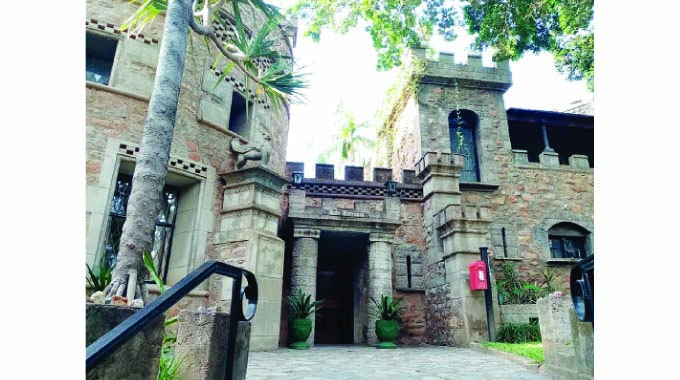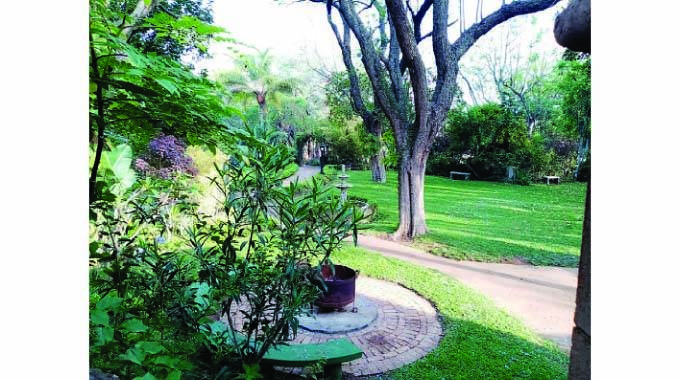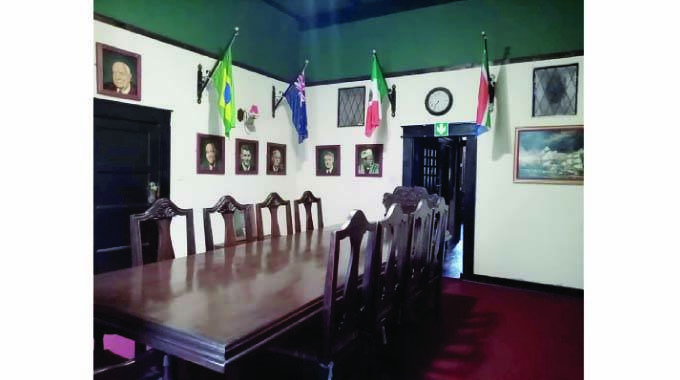Nesbitt Castle: The story behind the myth

Simba Jemwa, Saturday Chronicle Reporter
THE Nesbitt Castle is full of history and intrigue with its construction having commenced around 1910 and taken years to complete. The medieval castle has been refurbished and the tales it tells are more vivid than ever.
If the atmosphere becomes a bit too real for you, leave the foggy fortress behind and head to the waterfront, two spots that make Hillside a quintessential stop in Bulawayo.
This Saturday Chronicle crew was taken on a wild ride to Nesbitt Castle and followed Theodore Albert Edward (Garde) Holdengarde’s steps in search of the lore from the past at Nesbitt Castle.

Nesbitt Castle
The crew explored the Nesbitt Castle in search of the story behind the myth. Swinging between fact and fiction, we enjoyed the beauty of the Castle’s rich cultural background and its unending collection of endearing stories.
Built by Theodore Albert Edward (Garde) Holdengarde, no plans were laid out for the building, no architectural drawings; nothing submitted to the council for approval, just a collection of distant memories, a practical disposition and a romantic dream. Making this achievement even more noteworthy was the fact that Holdengarde was only a weekend builder.
The history of Nesbitt Castle is the history of two unusual men with extraordinary vision. Born in different centuries, these men fell in love with the idea of building or owning a family home in the heart of Matabeleland.
Medieval crenellations circle the towers and thick granite ramparts, echoing an era when romance and chivalry were the hallmark of hospitality.
That gracious ethos remains the signature of Nesbitt Castle today.
Hidden away in a woodland in Hillside, Bulawayo stands the creation of a madman or a genius, depending on your viewpoint. Holdengarde became an early mayor of the city and this proud sentinel of mortar and hand-hewn rock has walls thicker than the span of a man’s arms.
Its beautifully manicured gardens and secluded hideaways are a haven for those seeking respite from the anxieties of the outside world; the only sounds to be heard are those of Mother Nature.
This splendid example of bygone days of opulence and romance was restored in 1988 by the Nesbitt family. Just the right venue for fairy-tale weddings, romantic honeymooners or conferences.
The Holdengarde’s private residence was transformed into the Nesbitt Castle Hotel in 1990, the building itself still stands in all her glory — a unique accommodation experience, a boutique hotel like no other in Zimbabwe.
The Nesbitt Castle, which is located in the leafy suburb of Hillside in Bulawayo, is one of the most famous and yet mystical attractions in the city. Ask anybody and, even if they won’t have a clue as to where Nesbitt Castle is, they will instinctively let you know that it’s considered one of the most enduring and enticing pieces of architecture in the city.
Although it feels authentically medieval and does indeed have an interesting (although significantly shorter) history, Nesbitt Castle was built in the first half of the 19th century by Theodore Garde, the son of an early missionary, it was originally named the Holdengarde Castle.

Nesbitt Castle
Born in 1877 in the Eastern Cape of South Africa, Theodore was sent to Durham University to study theology. His stay in Durham, with its castle and medieval history, sparked a lifelong enthusiasm for antique artefacts and the Middle Ages. After returning to South Africa, he changed his name to Holdengarde, went on a trip to Zimbabwe and founded a company for construction engineering and hardware.
The company did well and Holdengarde became a successful businessman. He purchased 0.4km2 of land on the outskirts of Bulawayo and began to realise his dream — the construction of a Gothic fortress in the middle of Africa.
Over the next 30 years, Holdengarde ran his business, served the community (for which he was awarded an OBE) and functioned as the mayor of Bulawayo. At weekends, he, his wife and a small group of workers built the turrets and towers, twisting passageways and crenellations that were to become Nesbitt Castle.
Holdengarde’s vision, dedication and persistence replaced any plans or architectural drawings and enabled the team to face many obstacles, from heavy rains to the eccentric character of the owner, who would from time to time demolish and then rebuild his work.
In true adherence to the Middle Ages, Holdengarde even refused running water and electricity, although his wife had electricity installed in his absence. Running water, flush toilets and a telephone, however, were not added until after his death in 1948.
Over the following few decades, the castle fell into a sad decline.
More or less abandoned by the owners, it was occupied by squatters, Satanists and other dubious people, who even burnt down part of the building.
By 1988, when the castle was bought by Digby Nesbitt, it was a shabby, rain-invaded ruin. Nesbitt renovated and restored the building, stumbling across hidden niches and alcoves. In 1990 it was finally opened as a boutique hotel, The Nesbitt Castle.
With its thick granite ramparts, twisting staircases and crenellations circling the towers, Nesbitt Castle feels steeped in history, even if the place was built a few centuries later than its medieval style would have you believe.
During the tour, Nesbitt Castle manageress, Amy-Leigh Manhanga shared nuggets of history with this news crew: “It was initially built as a residence by Thomas Holdengarde; he felt living in a humble house was not for him.
He built the Castle without plans and over the next 30 years Thomas (who by now had married) toiled away on the site with a small band of dedicated workers building turrets and towers, twisting passageways and crenellations.
“He lived here with his family and initially never wanted it to have any running water and electricity. Maude Holdengarde, his gracious and loyal spouse eventually had electricity installed by squireling away her housekeeping money and waiting until
Thomas was away in South Africa at a conference! Running water, flush toilets and a telephone were only installed after Thomas’ death in 1948.
“After his passing away, his family moved out, but the Castle stayed within the family name but lay in ruin. Only in the 80s did Mr Nesbitt see it as a piece of land that he wanted.
He fell in love with the castle but his family originally advised that if he was to buy the land, he should destroy the castle and rebuild. However, he chose to renovate the castle with the help of his friend John Osborne and through the process discovered rooms that nobody even knew existed, because the passages were so narrow and walls had fallen in.
“Some of the thick granite walls that Thomas had so lovingly built with his amateur team, consisting of basically mud and water to hold it together, needed underpinning and reinforcing with 20th century techniques and ceilings and floors were hazardous after 70 years of water seepage. Mr Nesbitt officially opened it as a boutique hotel in 1990.”
The castle is replete with period furniture from as far back as pre-colonial times, medieval trinkets and animal trophies of some of the largest beasts found in this part of the world.– @RealSimbaJemwa












Comments